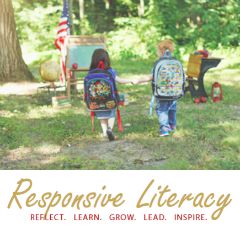We had our Instructional Decision Making (IDM) meetings this week, where we looked at student data with grade level teams and the reading team and DRC to help make some decisions for the remainder of the year.
To say the meetings are overwhelming would be an understatement. So many of us come to those meetings with different triggers that overwhelm, so it really is hard to neutralize all stress from that meeting. My part was supposed to be about the universal, and the second half of the year of reading workshop really does look different in many grades. So, how do I give information in a somewhat friendly way as to not completely overwhelm? Enter the double PB&J.
It started as a goal to create a single page "one sheet" with options for reading workshop in grades 2-5 as the year continues. We started the year with guided reading as the universal type of small group, but we are ready to start talking about other types of small groups that could be seen during workshop. We are building toward book clubs in those grades, and we want to hit some concepts before we get there so that kids are successful in them. As I started creating the boxes on the sheet, it almost started to look like a sandwich to me. At first, it was a double cheeseburger. But then... the double PB&J was born.
The Bread
The bread is the mini lesson and the share: The beginning and end to a solid workshop block. A purpose for reading, with accountability for that reading. The slices of bread keep it all together and focus both the teachers and students. I threw the CCSS into there, because our curriculum materials alone do not determine the types of mini lessons we need to have.The Peanut Butter
The layers of peanut butter are actually the types of small groups that *might* be going on in a workshop. I said *might* because this list of groups is not complete. They just happen to be the types of groups we discuss at Hiawatha the most. Also, two are kind of made up by me... It just goes to show you how important instructional decision making can be.The first layer of peanut butter are teacher led small groups. The first two are different levels of Jan Richardson guided reading (our universal model) and the third is a strategy group modeled off The Sisters (Boushey and Moser). The last two are actually just strategy groups, too, but are less focused on small size and reading level, but more on conversation and Common Core standard work around grade level text. We have many above grade level students who struggle with grade level common core work, and many ELL students who need explicit conversation instruction. Those are just groups that give teachers permission to focus on those areas, too, once students get to grade level reading levels. (Students below grade level could also be in those groups, but should also get guided reading as well.)
The second layer of peanut butter are small groups that are student led. For these groups, if the teacher has taught conversation and comprehension strategies all year, this is the time for the students to apply all they know with book clubs. Starting with partnership book clubs is a nice way to get those expectations going before book clubs officially start. Because they are student led, the teacher should be able to continue guided reading or strategy groups with those students she needs to see. Otherwise, she can observe and act as a moderator for the clubs as they have their conversations.
The Jelly
The first layer of jelly is the idea that shared/close reading strategies should be somewhere in the block. Namely, that all students should be exposed to their reading level AND grade level text, and that they should be taught to reread for deeper comprehension. This strategy can be used in all the small groups listed, or as a whole group strategy.The second layer of jelly are the things that help us assess our reading workshop and make decisions about what we need to do in our own rooms. No two classrooms are alike, because our students are not the same. Running records, conferring, and formative assessments help guide us where we need to go with our students. Adding mini lessons, starting a strategy groups, close reading an image, working on a certain standard, all start with assessments.
That's it! The double PB&J.
You might spread peanut butter and jelly onto the sandwich as separate layers, but they blend together immediately. So do all the pieces in reading workshop!
What is your reading workshop PB&J going to look like in 2015?
***Thanks, +Felicia Frazier +Michelle Brezek +Courtney O'Connor +Anne Kruder +Meg Hanisch for the collaboration on my double PB&J! You literacy coaches are the best!











































